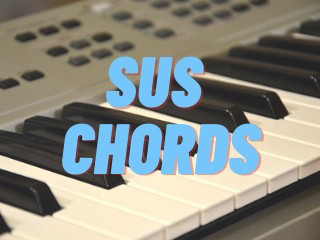The following two tabs change content below.


Greg Lee
Hi, my name is Greg Lee. I'm the creator of the Color Score Professional/Visual Chord Learning System. I love to share ideas and concepts about piano and keyboard playing in all styles of music. I believe the key to learning is having fun and making complicated things simple with visual tools and illustrations.
Latest posts by Greg Lee (see all)
- What is a minor/Major 7 Chord? - October 26, 2023
- 7 Chord Substitutions that Professionals Use - October 19, 2023
- 5 Simple Chord Tricks to Sound Amazing - October 5, 2023


 You can find a lot of things to create suspense in life. Such as a good drama at the movies or even today's reality TV. But fortunately, they're not the only entities where you can find a satisfying feeling of suspense. In music, we have sus chords and we're going to go over them in this article.
You can find a lot of things to create suspense in life. Such as a good drama at the movies or even today's reality TV. But fortunately, they're not the only entities where you can find a satisfying feeling of suspense. In music, we have sus chords and we're going to go over them in this article. A sus4 chord is a suspended chord in which you suspend the 3rd tone and play the 4th. It is the most common suspended chord and if you see a chord notated as simply "sus" then it's implying the sus4 chord.If you're familiar with the number system, you know the 4th tone of a chord is located a half step up from the 3rd.
A sus4 chord is a suspended chord in which you suspend the 3rd tone and play the 4th. It is the most common suspended chord and if you see a chord notated as simply "sus" then it's implying the sus4 chord.If you're familiar with the number system, you know the 4th tone of a chord is located a half step up from the 3rd. So C sus4 consists of the root, 4th and 5th tones.
So C sus4 consists of the root, 4th and 5th tones.




 So C sus2 consists of the root, 2nd and 5th tones.
So C sus2 consists of the root, 2nd and 5th tones.




